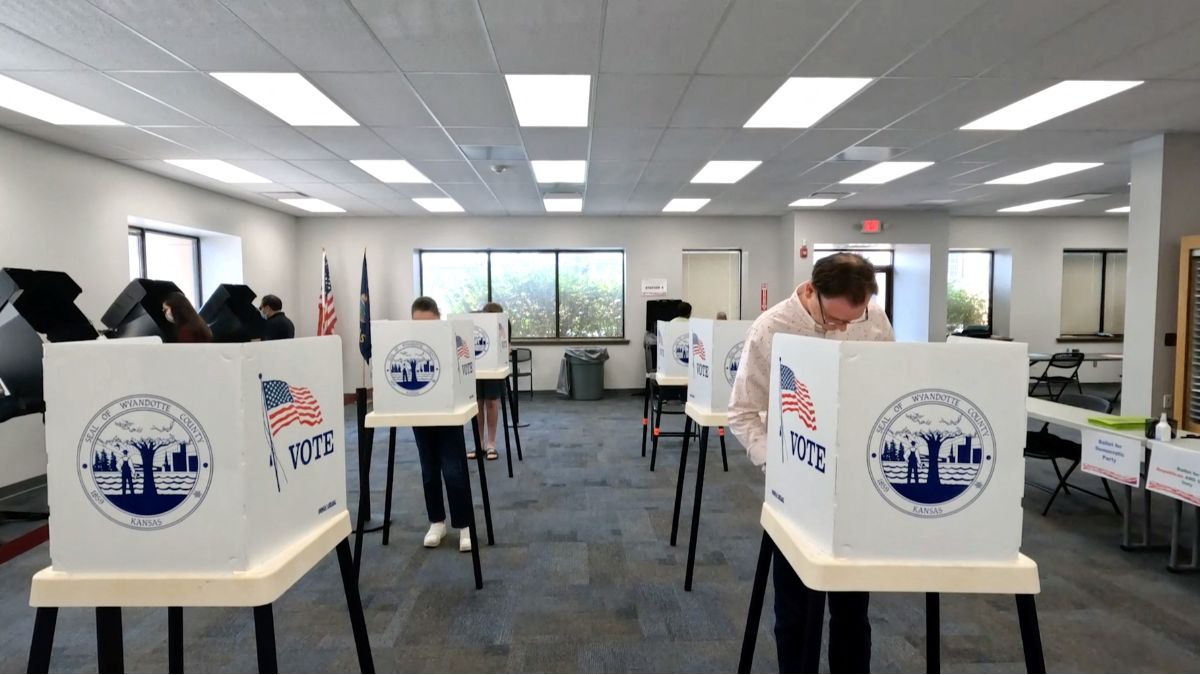Kansas, long considered a reliably Republican state, has entered the spotlight in recent election cycles as shifting demographics and recent polling suggest a potential shift.
While Democrats have historically struggled to win Kansas at the presidential level, recent data shows a closer race than anticipated, raising the question: is Kansas on the cusp of becoming a battleground state?
A recent poll from Fort Hays State University Docking Institute of Public Affairs showed former United States President Donald Trump leading Democratic nominee and US Vice President Kamala Harris by just five points among likely voters (48 per cent to 43 per cent), a surprising statistic in a state where Republicans have held a stronghold for decades.
Among all Kansans, Trump’s lead widens to 11 points (50 per cent to 39 per cent), indicating that the Republican grip, while still firm, may be loosening.
Kansas’s voting trends
Kansas has traditionally voted Republican, securing victories for GOP candidates in 33 out of 40 presidential elections since it became a state. Republican candidates like Dwight Eisenhower (1952, 1956) and native son Bob Dole (1996) were particularly popular here.
Kansas, however, has veered Democratic during national landslides, such as when Franklin D Roosevelt won in 1932 and 1936 amidst the Great Depression, and when Lyndon B Johnson won in 1964 following the assassination of President John F Kennedy.
Any substantial political change in Kansas would require extraordinary circumstances. Yet, while Kansas has consistently voted Republican, particularly in rural and suburban areas, recent shifts in voter demographics have introduced an element of unpredictability.
What the numbers tell us
Polling data reflects notable shifts in Kansas’s political landscape. The Fort Hays State University poll showing Trump with a narrowed lead of five points is unprecedented for Kansas, which saw Trump win by nearly 15 points in 2020 (56.1 per cent to 41.5 per cent).
His previous win in 2016 was even more substantial, with a margin of over 20 points. Before him, Mitt Romney won by nearly 22 points in 2012, and George W Bush carried Kansas by 25 points in 2004 and 21 points in 2000.
While such a narrowed margin may not be enough to flip Kansas, it is a marked difference from prior elections and a signal that some areas in Kansas are indeed becoming more politically competitive.
Demographic changes in Kansas’s urban and suburban areas, especially among educated voters, contribute to this trend. Johnson County, a fast-growing suburban area outside of Kansas City, has seen significant Democratic gains, moving from an 18-point Republican margin in 2012 to voting for Joe Biden by over eight points in 2020.
Sedgwick County, which includes Wichita, has also seen a shift, with Romney winning by 20 points in 2012 and Trump winning by less than 12 points in 2020.
Democrats have also made gains by focusing on education and healthcare issues, as well as advocating for reproductive rights and public education in suburban areas, which tend to have higher college-education rates.
Democratic victories in Kansas
Democrats have already achieved significant victories in Kansas’s recent elections, signalling that a shift, while slow, may be in progress.
In 2022, Governor Laura Kelly won reelection by just over two points despite facing a strong challenge from Republican Derek Schmidt, making her the first Democratic governor to serve consecutive terms in Kansas since the 1970s.
That same year, Kansas voters also rejected a constitutional amendment that would have removed abortion protections with a decisive 59-41 margin, a clear sign that moderate views on certain social issues are gaining traction even in traditionally conservative areas.
Additionally, US Representative Sharice Davids successfully flipped a traditionally Republican seat in Johnson County in 2018 and held onto it in 2022, winning by a notable 12-point margin despite the district being redrawn to favour Republican candidates.
Is Kansas going to be blue in the future?
For Democrats to have a chance at flipping Kansas in the future, they will need to gain more support in the rural areas where they currently garner less than 20 per cent of the vote.
These rural regions are predominantly Republican, and their sheer size and number of voters make statewide Democratic victories a challenge. While urban and suburban support is increasing, Democrats’ statewide influence remains limited by rural voting patterns.
Experts caution that while the current trends are promising, Kansas will remain a difficult target for Democrats in national elections without a broader rural strategy. Experts state Kansas will only truly become a swing state if Democrats make serious inroads in rural communities.
Also Watch:
Kansas has historically been labelled a “Safe Republican” state by sources like the Cook Political Report.
The recent polling data and demographic shifts indicate that while a complete Democratic victory remains unlikely in the near term, the state may see closer contests in the coming years.
With inputs from agencies
)